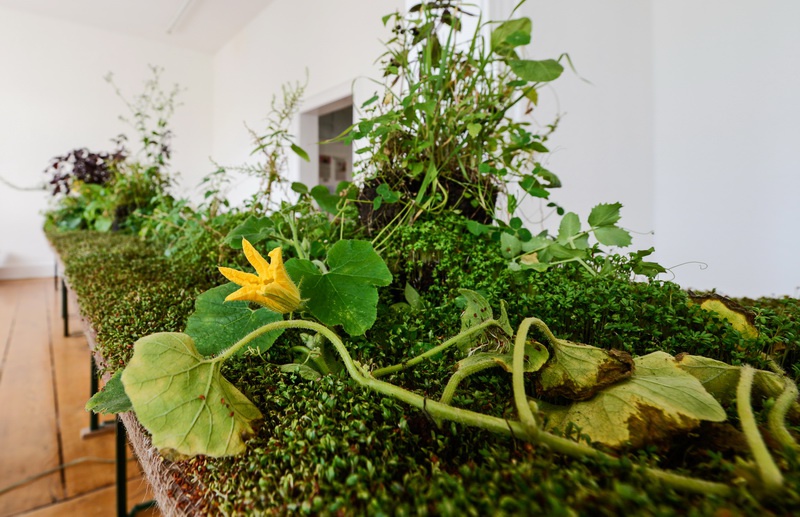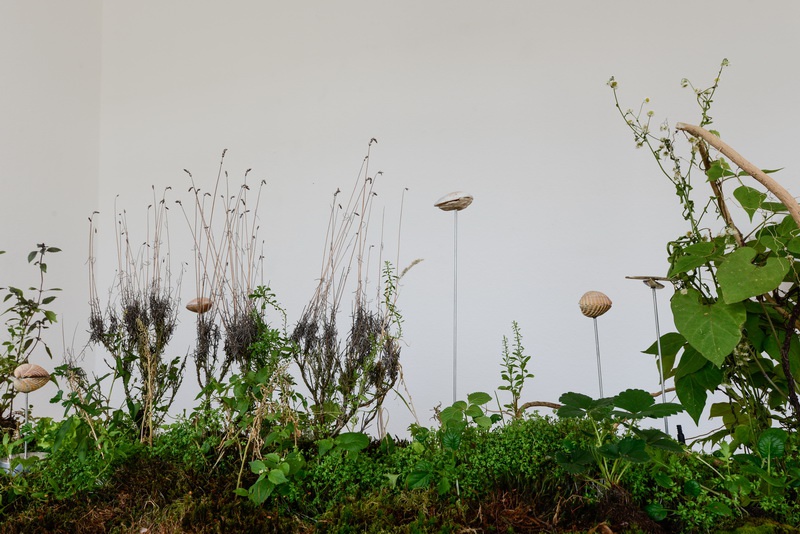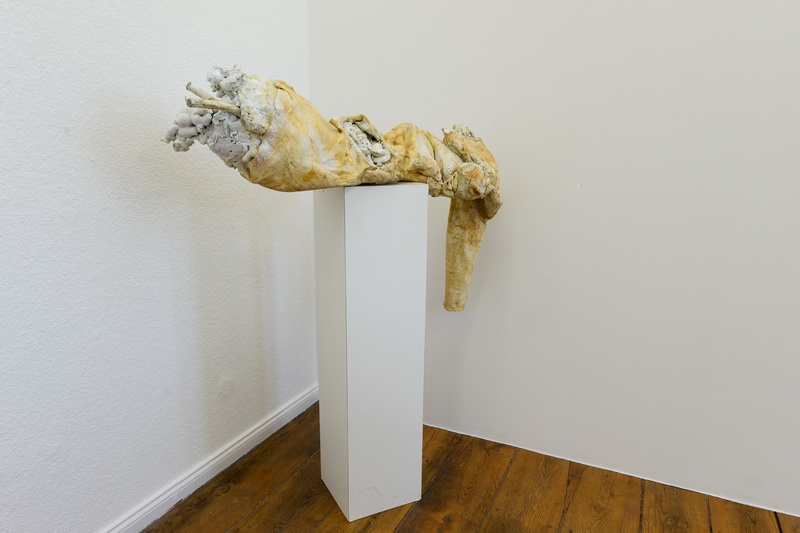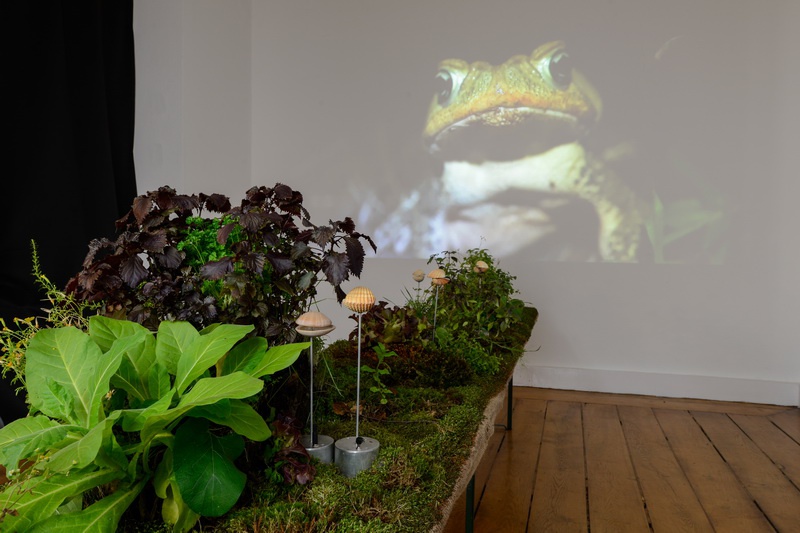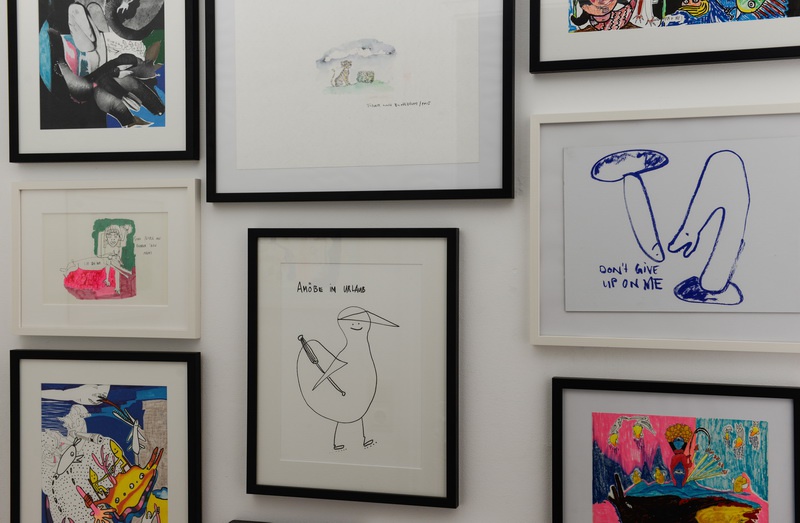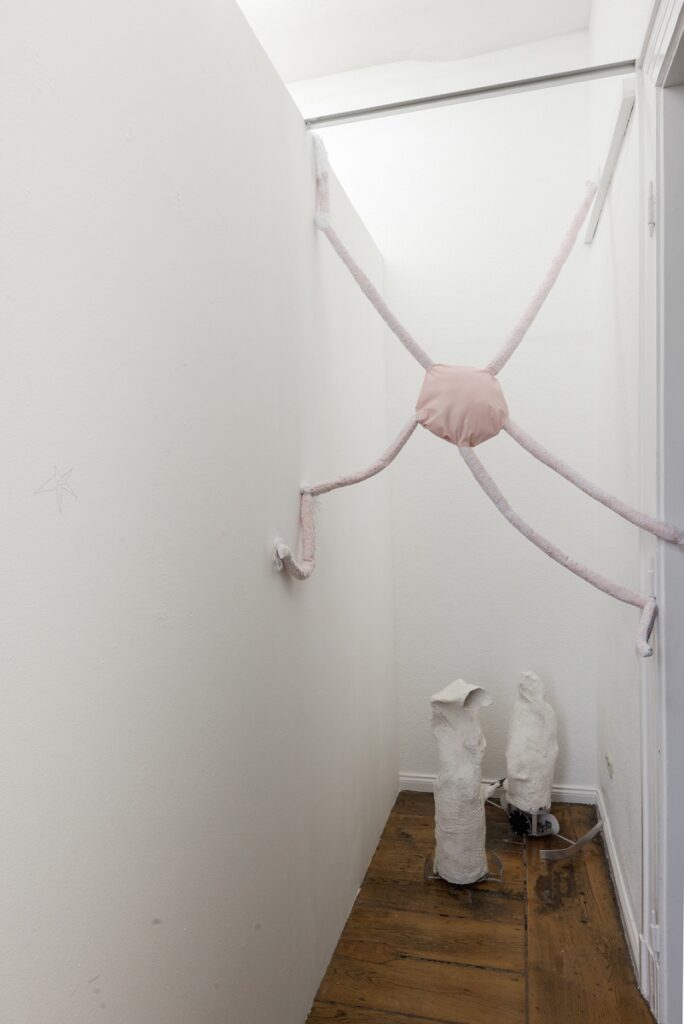Anne Duk Hee Jordan
Ziggy goes wild
20. September – 16. November 2019
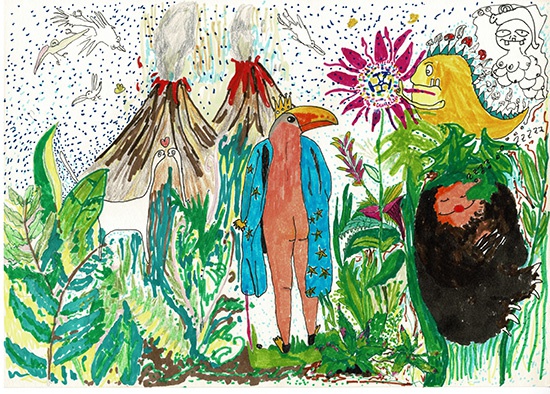
After Ziggy on the Land of Drunken Trees(Galerie Wedding, Berlin 2018) and Ziggy and the Starfish. How one becomes One with a Fish (Riga International Biennial of Contemporary Art 2018), artist Anne Duk Hee Jordan's exhibition trilogy now comes to a crowning conclusion with Ziggy Goes Wild at Kunstverein Arnsberg.
Ziggy is borrowed from a fictional character in David Bowie's work (Ziggy Stardust, 1972) and embodies a bisexual and promiscuous (Martian?) man who ponders the end of the world with apocalyptic thoughts. As a counterpart to the starfish, the invisible Ziggy in Anne Duk Hee Jordan's film stands for the beauty, strangeness, queerness and exoticism of sea creatures, which are subject to various mutations and changes in their sexuality in the face of global climate change. In a research project with curator Pauline Doutreluingne, the accomplished diver realised a wall-spanning multi-media collage Changing Sex in Ecology (2016-2018). In her three-part film story, Jordan creates the scenario of a post-anthropocentric age in which humans are no longer at the centre of events, but instead take the perspective of the ‘others’ who (not only) fascinate her. She does not choose catastrophic images, but a thoroughly marvellous, fantastic and playful aesthetic that is able to cast a spell over the viewer.
At Kunstverein Arnsberg, Anne Duk Hee Jordan is showing drawings, several films, including Staying with the trouble and sculptural, kinetic objects such as Homo Stupidus Goethe Robot a flying sea cucumber and a monumental starfish, all of which seem to have a life of their own and claim the exhibition space for themselves.
She recently designed a sculptural stage set for the piece borrowed from Donna Haraway by artist Carlos Manuel in Berlin, entitled Unruhig bleiben/Staying with the trouble (2019), a speculative fable about the connection between humans and monarch butterflies. She is now showing the film for the first time at the Kunstverein. In her book of the same name, feminist and science theorist Haraway conjures up new forms of kinship for life after the Anthropocene. Neither technological euphoria nor apocalyptic doomsday moods are the solution; instead, we only have a chance if we remain restless, question old hierarchies and values and continue to live in the future as so-called ‘symbionts’ - ideas that play an important role in Jordan's artistic oeuvre. Haraway describes this ‘co-becoming’ with other species as ‘sympoiesis’, focussing on those under pressure on our planet, such as the indigenous population or extinct animal species.
The centrepiece of Anne Duk Hee Jordan's exhibition is the expansive work Into the Wild, a social food sculpture, an exuberant table consisting of edible herbs, roots, various types of vegetables and other, sometimes forgotten plants - framed by a chorus of clapping clams (Clapping Clams, 2018). Visitors will eat these together in a conceptual performance. During the performance, the remains will increasingly decompose, rot and finally be composted and returned to the organic cycle as fertile humus. ‘Human’ does not come from ‘homo’, but from ‘humus’, according to Haraway in her ecological ethics, which uses the strategy of composting to refer to the utilisation of previous, used material that decomposes to create a new ‘product’. So are we ultimately nothing more than compost, as Haraway surmises? ‘We are compost, not posthuman; we inhabit the humusities, not the humanities.’
Anne Duk Hee Jordan poses these and similar questions in her multifaceted work and thus encourages us to reflect on our relationship to the environment and its various inhabitants, which have long since rendered the distinction between nature and culture obsolete.
exhibition documentation: Heiner Lieberum
